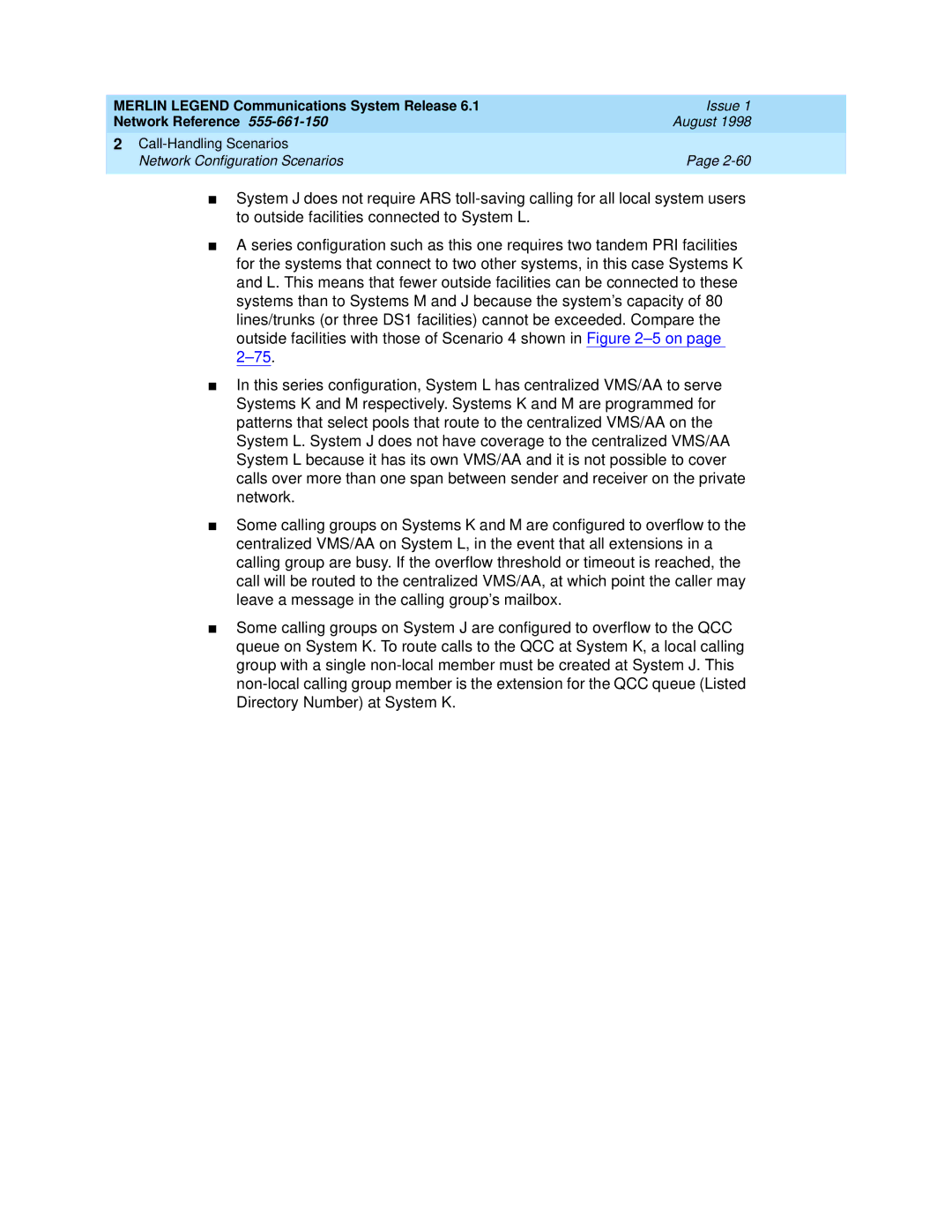MERLIN LEGEND Communications System Release 6.1 | Issue 1 |
Network Reference | August 1998 |
2 |
|
Network Configuration Scenarios | Page |
|
|
■System J does not require ARS
■A series configuration such as this one requires two tandem PRI facilities for the systems that connect to two other systems, in this case Systems K and L. This means that fewer outside facilities can be connected to these systems than to Systems M and J because the system’s capacity of 80 lines/trunks (or three DS1 facilities) cannot be exceeded. Compare the outside facilities with those of Scenario 4 shown in Figure
■In this series configuration, System L has centralized VMS/AA to serve Systems K and M respectively. Systems K and M are programmed for patterns that select pools that route to the centralized VMS/AA on the System L. System J does not have coverage to the centralized VMS/AA System L because it has its own VMS/AA and it is not possible to cover calls over more than one span between sender and receiver on the private network.
■Some calling groups on Systems K and M are configured to overflow to the centralized VMS/AA on System L, in the event that all extensions in a calling group are busy. If the overflow threshold or timeout is reached, the call will be routed to the centralized VMS/AA, at which point the caller may leave a message in the calling group’s mailbox.
■Some calling groups on System J are configured to overflow to the QCC queue on System K. To route calls to the QCC at System K, a local calling group with a single
